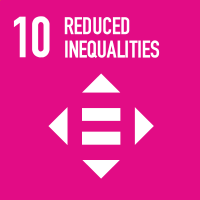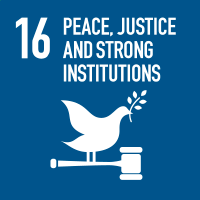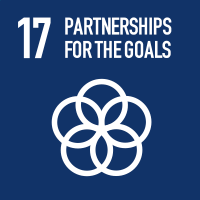Studying at the University of Verona
Here you can find information on the organisational aspects of the Programme, lecture timetables, learning activities and useful contact details for your time at the University, from enrolment to graduation.
Study Plan
This information is intended exclusively for students already enrolled in this course.If you are a new student interested in enrolling, you can find information about the course of study on the course page:
Laurea in Servizi giuridici per imprese, amministrazioni e no-profit - Enrollment from 2025/2026The Study Plan includes all modules, teaching and learning activities that each student will need to undertake during their time at the University.
Please select your Study Plan based on your enrollment year.
1° Year
| Modules | Credits | TAF | SSD |
|---|
2° Year It will be activated in the A.Y. 2025/2026
| Modules | Credits | TAF | SSD |
|---|
1 module between the following1 module between the following3° Year It will be activated in the A.Y. 2026/2027
| Modules | Credits | TAF | SSD |
|---|
3 modules among the following| Modules | Credits | TAF | SSD |
|---|
| Modules | Credits | TAF | SSD |
|---|
1 module between the following1 module between the following| Modules | Credits | TAF | SSD |
|---|
3 modules among the following| Modules | Credits | TAF | SSD |
|---|
Legend | Type of training activity (TTA)
TAF (Type of Educational Activity) All courses and activities are classified into different types of educational activities, indicated by a letter.
Comparative Legal Systems (2024/2025)
Teaching code
4S009846
Academic staff
Coordinator
Credits
6
Language
Italian
Scientific Disciplinary Sector (SSD)
IUS/02 - COMPARATIVE PRIVATE LAW
Period
2° periodo lezioni (2A) dal Feb 12, 2025 al Mar 25, 2025.
Courses Single
Authorized
Learning objectives
The course is intended to provide the student with the knowledge of the basics of the comparative method, which is key to understand the phenomena of contemporary societies as well as the categories, meaning, functioning of private and public law tools.
At the end of the course, the student will be able to elaborate on public and private law rules and notions, applying the comparative methodology, in both written and oral forms, developing proper reasoning and argumentation, using an appropriate and specific vocabulary, reaching independent judgement on actual cases.
Prerequisites and basic notions
As a first-year teaching, there are no specific prerequisites different from those required for admission to the Degree Course.
Program
1. In the first part of classroom lectures (comparative private law, 15 hours), the course will focus on substantive private law institutions and on comparative law's role in professional life. Special attention will be paid to contract law and issues related to international contracts.
2. In the second part of classroom lectures (comparative public law, 15 hours), after an introduction on the method, functions and methods of legal comparison, the course deals with the concepts of legal family and legal tradition. The concept of the source of law is then explored in depth and the main manifestations of the legal phenomenon in the various families and traditions previously analyzed will be illustrated (forms of State, forms of government, ways of producing the legal phenomenon).
3. Flanking the classroom lectures are two laboratories for attending students, one in the area of public law and one in the area of private law (6 hours each): both are structured according to innovative teaching methods (“Learning by Doing”), through the active involvement of students in the training experience.
Bibliography
Didactic methods
The course includes lectures for 30 hours and two laboratories for a total of 12 hours; attendance is strongly recommended.
Within the teaching methods, the following is specified.
1. An innovative teaching activity will be carried out by means of laboratory activities for students phisically attending the teaching.
2. Any students enabled to use the recorded lectures and accessible via the Panopto platform (i. with a disability, or DSA, upon notification to the Professor by the "UO Inclusione e Accessibilità"; ii. participants in the “PA 110 e lode” training project) can carry out the laboratory activity on an optional basis.
3. Incoming Erasmus students are invited to contact the professor in charge of the teaching (enrico.andreoli@univr.it) for the precise definition of the teaching methods dedicated to them.
Learning assessment procedures
The assessment of expected learning outcomes differs for attending and non-attending students, as follows.
Students who attend 80% of the lectures (24/30 hours) are considered to be attending; any students enabled to use the recorded lectures and accessible via the Panopto platform (indicated above) are considered to be attending upon confirmation of the viewing of 80% of the recorded lectures (24/30 hours).
1. For attending students: written test with multiple-choice and open-ended answers, of one and a half hours' duration, whose programme is made up of the topics covered during the classroom lectures.
For attending students in the classroom, may constitute integration of learning outcomes the laboratory activity; the same applies to any students qualified to use the recorded lectures through Panopto platform (indicated above) who decide to attend the laboratory activity.
2. For non-attending students: oral test, whose syllabus consists of the examination bibliography indicated in the appropriate section.
For any information, non-attending students may refer to the professor in charge of the teaching (enrico.andreoli@univr.it).
3. Incoming Erasmus students are invited to contact the professor in charge of the teaching (enrico.andreoli@univr.it) for the precise definition of the examination arrangements for them (consisting of the discussion of a paper).
Evaluation criteria
The evaluation criteria include the ascertainment of:
1. the depth and breadth of knowledge gained;
2. the ownership of language;
3. the analytical and argumentative ability;
4. the ability to critically reflect on and link the topics covered in the teaching programme.
The evaluation of the final examination (both written and oral) is expressed in thirtieths.
Criteria for the composition of the final grade
For students attending in the classroom and for any students qualified to use the recorded lectures through Panopto platform (indicated above) who decide to attend the laboratory activity, the performance of the latter activity may supplement the final grade up to a maximum of 2 points.
Exam language
Italiano; per gli studenti Erasmus incoming è prevista la possibilità di effettuare la prova d'esame loro dedicata (discussione di un paper) in lingua inglese. / Italian; incoming Erasmus students will have the opportunity to take their exam (discussion of a paper) in English.



